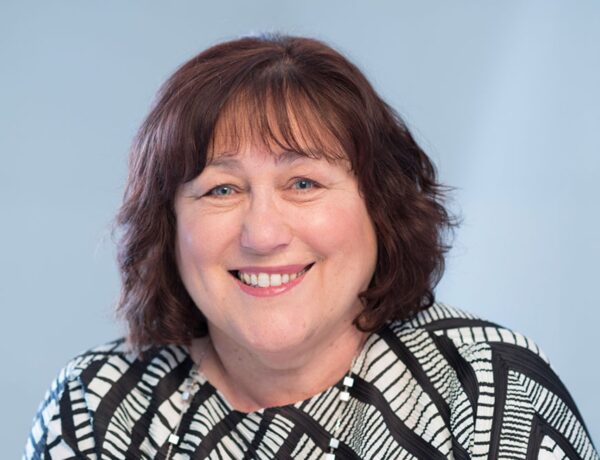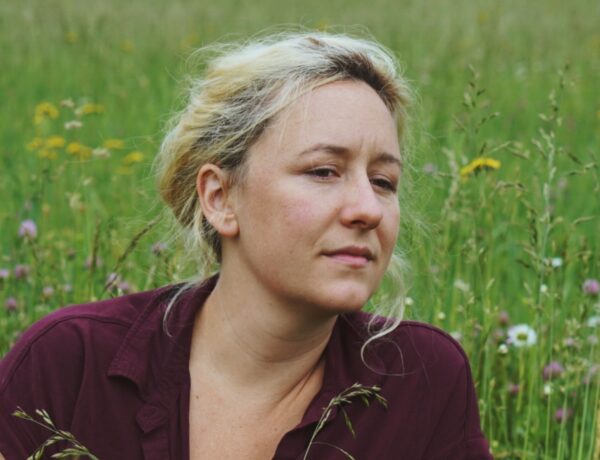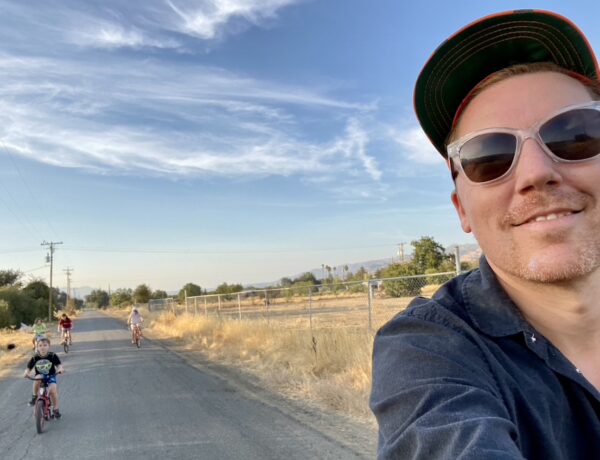Meredith May is an award-winning journalist and bestselling author of several memoirs, including The Honey Bus and Loving Edie.
She is also a fifth-generation beekeeper, and her grandfather’s bee yard played a major role in her childhood and her writing. Her memoirs have been published in 18 countries and translated into 11 languages, and she also has a children’s picture book version of her memoir coming out in 2024.
With a successful career in journalism at the San Francisco Chronicle, her reporting has won numerous awards and was even shortlisted for the Pulitzer Prize. She is also a former professor of journalism and podcasting and currently lives in Carmel Valley, California, where she writes, beekeeps and volunteers as a scuba diver for the Monterey Bay Aquarium.
Each week, we publish a new daily writing routine from a famous author. Subscribe to our newsletter so you don’t miss out!
Hi Meredith! We’re delighted to have you as a guest on Famous Writing Routines. For our readers who may not be familiar with your work, could you please give us a brief introduction to yourself?
First of all, thanks for implying that I’m famous. That’s pretty snazzy, even if it’s a wee (!) bit of an exaggeration. Briefly: I spent 26 years as a newspaper reporter, more than half of those years at the San Francisco Chronicle where I wrote for nearly every section of the paper: news, arts, food, travel, sports, home & garden, and features.
From 2011-2014, I kept beehives on the roof of the Chronicle and wrote a column about urban rooftop beekeeping. I won a few awards for writing about a war-wounded Iraqi boy saved by Bay Area surgeons, a Korean woman trafficked to a San Francisco massage parlor, and a superintendent of an impoverished school district who had a bad habit of using the school district credit card to buy himself luxury gifts. I left newspapers in 2015 to write books.
The first was a memoir for someone else: I, Who Did Not Die, about an Iranian child soldier who risked his life to save his enemy; then I wrote my story – The Honey Bus about my Big Sur grandfather and how he and his honeybees rescued me from a rocky childhood; and then Loving Edie in 2022 about learning how to love and accept my clinically anxious golden retriever puppy, Edie. Now I’m writing children’s books and personal essays.
When I’m not writing, I’m cleaning windows and feeding fish/sharks at the Monterey Bay Aquarium as a volunteer scuba diver. Or learning to play 80’s rock on the drums. Or hiking with Edie. Or hosting a fire safety meeting for the neighbors – we live in a wildfire zone. Or knitting and watching some show about con artists. Can’t look away.
In your memoir, The Honey Bus, you write about the life lessons you learned from your grandfather’s beekeeping. Can you tell us about your writing process for that book and how beekeeping influenced your writing?
I love telling this story because it’s full of rejection – which is 90% or maybe 98% of writing. It took me nearly a decade to write The Honey Bus because at first I was just writing stories about all the ways My Mama Done Me Wrong and then stringing them together in some sort of monster mom manifesto.
It was therapeutic, necessary, and absolutely un-marketable. It appealed to an audience of exactly one. My agent kindly explained this to me, but she believed in the central story. So I rewrote the whole thing, keeping just a small fraction of the Mom scenes and making it more about my relationship with my Grandfather. It had improved, and my agent went out with it to a dozen publishers, and just one almost, but not fully, bit.
Mind you, I had walked away from a paycheck and benefits to see if I could make this writing thing work and this defeat sent me into a deep funk. I ate a lot of chocolate during this period. Adding to the sadness – Grandpa was too frail to continue lifting his beehive boxes and had to quit beekeeping after 70 years.
So an editor and I convinced the bosses to let us put two beehives on the roof of the Chronicle – part of my motive was to have Grandpa mentor me so he could stay connected to bees. I hadn’t held bees since childhood, but when I did again, their vibration, their scent, their sound – all of it was so familiar – so personal – that I wept.
That’s the moment I knew what my book was about – about why my happy place is inside a cloud of stinging insects. If I could explain that; I would have an unusual book. I rewrote the book a third time, this time it came out much more easily because I had tapped into the emotional truth of my story.
I kept reminding myself to write about the things only a beekeeper sees when they are alone with the bees. The bees moved from set decoration to center stage. And this time, my rejected memoir sold in 17 countries and was translated into 11 languages. If I had listened to that initial No, I wouldn’t have made it to that magnificent Yes.
You have a children’s picture book version of The Honey Bus titled My Hive coming out in 2024. How did you approach writing for a younger audience and what challenges did you face?
I have mad respect for children’s book writers and poets. The writers who use the fewest words have the hardest jobs in the industry. I approached this project with absolute terror – which is what drew me to it. Amy Novesky, a very successful children’s book author and editor at Cameron Kids called me to suggest the project and I told her that I would try on the condition that I might turn in a total stinker. She was kind and said she would work with me, and that turned into many drafts back and forth. She was patient and supportive and I couldn’t have done it without her.
It was difficult for me because it was like condensing my 300-page memoir into 750 words, while making it interesting for children as well as the adult reading to the child, with description but not too much description because there will be illustrations, all the while not shying away from the sad parts of my childhood yet not bumming young readers out. Rubik’s cube writing. But I’ve seen early drafts of the illustrations and it moved me to tears to see Grandpa and me drawn.
Discover the daily writing habits of authors like Stephen King, Neil Gaiman, and Gillian Flynn with Famous Writing Routines Vol. 1 and learn how to take your writing to the next level. Grab your copy today!
In 2017, you published a book, I, Who Did Not Die, which tells the true story of an Iranian child soldier who chose mercy over murder. Can you talk about your research process for this book and how it differs from your memoirs?
I, Who Did Not Die was much more journalistic in approach because I knew just the most basic aspects of the Iran-Iraq War and the two men’s stories. I also didn’t speak Arabic or Farsi, so I needed translators. I spent six weeks in Vancouver, Canada where the men lived and interviewed them separately, over three weeks’ time recording it all on a Tascam.
I read as many books as I could find on the first Gulf War and went through old newspaper microfiche to find on-the-ground reporting. Ghost-writing is like being a reporter because I basically embed myself in someone else’s culture and history.
With my own memoirs, I rely on old diaries, photos, and interviews with friends and family, but ultimately the choices I make in scenes, dialogue, and storytelling come from my own emotional and literal memory. I wrote I, Who in six months because I had so much prior training writing other people’s stories as a newspaper reporter – I was primed for that.
Writing about myself took 10 years because it’s so hard to see myself and my emotions in perspective, and to be able to reflect back on my childhood as an adult. All that emotional processing was happening as I was writing the book, so it took a while to be able to detach myself enough to write it in a way that would appeal to a reader.
With your background in journalism and having won awards for your reporting, how do you balance your journalistic approach with your personal voice in your memoir writing?
As a reporter, it’s a fire-able offense to insert your opinion or type the words “me, myself, or I.” In the early drafts of my memoir, it was hard for me to do that, I felt like I was breaking a rule. And even when I thought I was sharing my emotions and thoughts, my editor kept encouraging me to go deeper.
I would write a scene of something dramatic happening, and then abruptly end the chapter, assuming the emotional outcome was implied. I thought it was obvious what the reader should take away from it. But that’s journalism, not the literary form of shared internal life. For example – I’d write about being teased in elementary school and leave it at that.
My editor explained that yes the reader knows the main character is sad, but how does sadness manifest itself specifically for Meredith? I had to keep reminding myself that what’s obvious to me is not obvious to whoever is reading it. Once I caught on that I’m not over-explaining my emotions, I’m explaining how they are unique to me, the internal voice came through. Now that I’ve spent so much time writing in first-person, it feels second-nature.
You have written about a variety of different subjects, from beekeeping to child soldiers. How do you choose the next topic for your writing and what draws you to certain stories?
When I feel myself become obsessed about something, I know there’s probably something there worth exploring. Right now I feel a compulsion, in my 50s, to learn to play the drums. I fantasize about performing on a small stage at a local winery, and just slaying “Enter Sandman,” which is funny to me, so then I have to ask myself, “What’s up with that?” I have three brothers, two cousins, and an 8-year-old nephew who are all drummers.
I played drums in my elementary school band. I’m taking lessons now with a professor from the Berklee School of Music who once played with James Brown. There’s a story in there about aging, DNA, funk, I don’t know what will come of it but it’s knocking on my door right now. I hope I can tell you one day.
In the meantime, I’m just keeping a diary and driving my wife crazy by quizzing her off the radio – asking her to tell me what count the drummer is playing. I just bought a T-shirt off Etsy with an octopus playing the drums. It’s like I’ve become a teenager again.
As a former professor of journalism and podcasting, how do you see the role of podcasting in the world of memoir writing and storytelling?
Podcasting is still so exciting as a genre. I love the inherent democracy of it – anyone can create one without having to go through a gatekeeper or have a lot of funding. I love the immediacy and intimacy of podcasting – since it burst on the scene I’ve been able to listen to stories directly from people who previously were absent from mainstream media – or their voices were always filtered through someone else’s interpretation.
I’m thinking of podcasts like Ear Hustle – written, produced, and told from the point of view of inmates at San Quentin Prison. I learned more about what life is really like in prison than I could from watching a movie or TV show. And the investigative podcasts such as Serial and In The Dark are exonerating people who were wrongfully convicted, podcasting has become the repository of investigative journalism that has disappeared from most print newspaper budgets since the early 2000’s.
As homework, I used to have my podcasting students listen to Snap Judgment, based in Oakland. Not only are the stories varied and multicultural, the host Glynn Washington’s audio essays are some of the best memoirs I’ve heard.
What does your writing workspace look like?
A multipurpose room with a desk in it! We have a studio separate from the house that we’ve turned into a place to write, work out, play music, nap, meditate, store frozen meats and toss things we don’t know where to put elsewhere.
I write at a stand-up desk with empty beehive boxes stacked under it. I stand on a balancing disc when I write because I heard it’s good for coordination and core strength. There are weights and yoga mats and a spin bike in there.
In one corner is a daybed because sometimes writing is not typing but reading, or just closing your eyes and thinking big thoughts. In the other corner is my drum set, great for the days when the words won’t come. It’s helpful to me to have a place to “go to work” that’s physically and mentally separate from the main living space. During the pandemic we realized how crucial it is to have a place to go to be alone and think.

Affiliate disclaimer: Some links on this website are affiliate links. We may earn a small commission if you make a purchase through these links, but only promote products we truly believe in. We disclose affiliate links and give honest reviews.



1 Comment
Jeanette Scotland
March 21, 2023 at 00:09While I have not gone through all the previous posts I would encourage the creators of this link to contact Kali Fajardo-Anstine the author of A Woman of Light and Sabrina and Corina. She was the winner of the National Book Award in 2019, and Denver Mayor’s Award for Global Impact in the Arts, and the Mountains and Plains Independent Booksellers Association Reading The West Award in Fiction.
I am not paid to promote Kali. She’s just a great writer and presenter of her materials. I met Kali while she worked at the League of Women Voters office while finishing her first book, Sabrina and Corina
Jeanette Scotland
Co-Chair Voter Service
League of Women Voters of Denver